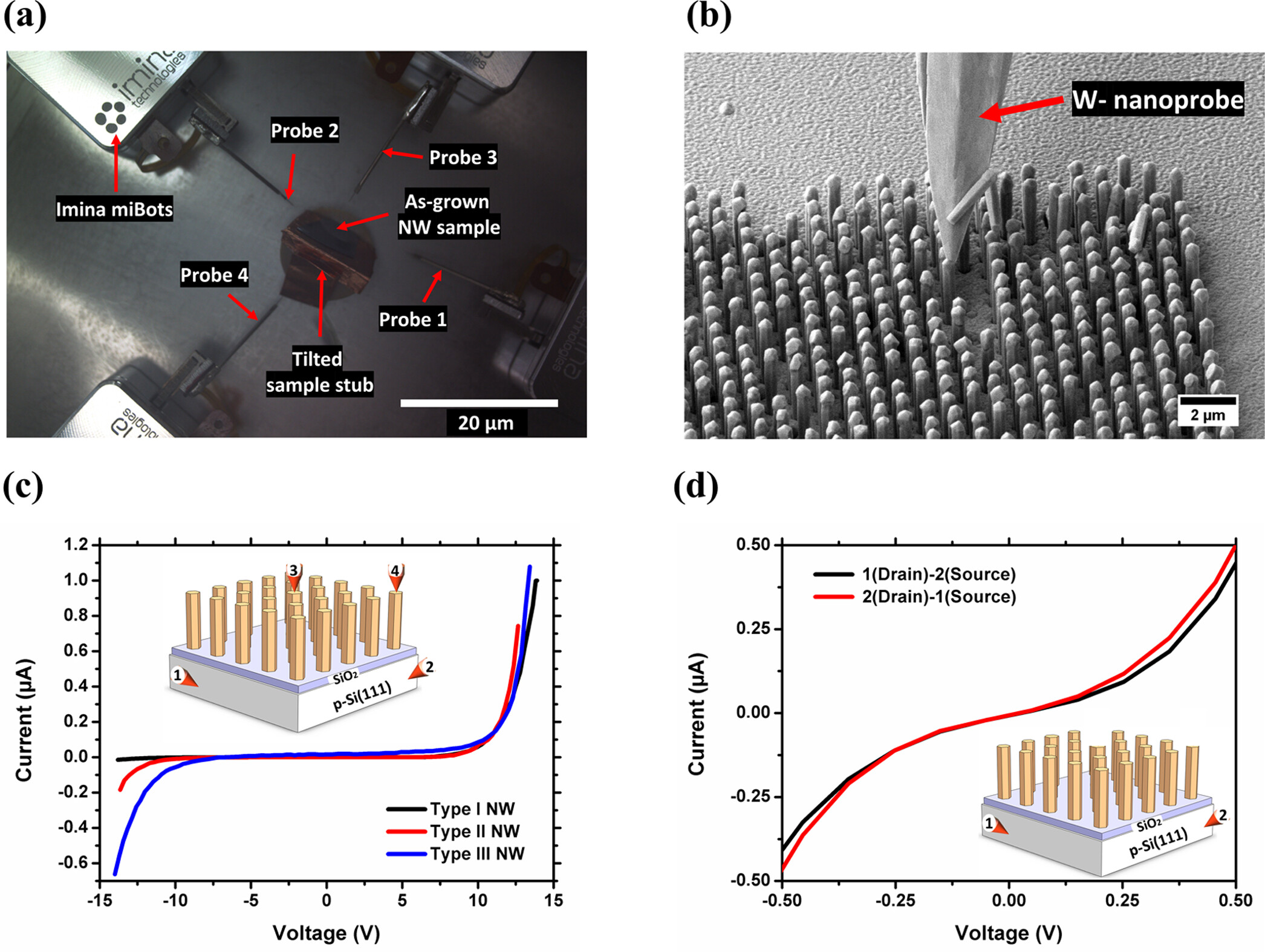A new paper published by Dr. Anjan Mukherjee and his colleagues from NTNU is aimed to understand how the nanohole mask, nanowire growth, and post-growth device processing impact the overall photovoltaic performance.
In this work, the researchers fabricated a radial p−i−n junction GaAs nanowire array solar cell. However, it turned out to have high leakage current density and photoconversion efficiency of only ∼2.1%. To investigate the cause of the leakage, the team measured the p−i−n junction properties of 20 randomly selected individual nanowires in the array by nanoprobing, using Imina Technologies’ NANO miBots. The nanowires showed a high variation of their electrical properties.
As a comparison, planar single-nanowire solar cells, also fabricated in this lab, have shown rectifying characteristics with a high on/off ratio and photoconversion efficiency of ∼5.6%. Such significant difference in performance suggests strond current leakage through the substrate contact in the vertical configurations of the nanowires.
Further investigation by TEM revealed that the p-GaAs NW core of many nanowires in the array has grown off-center with respect to the prefabricated hole mask. Most likely this misalignment led to the partial or full electrical shortening of the n-GaAs shell to the p-Si substrate.
We are very excited to see how our nanoprobing solution enabled Dr. Mukherjee and his colleagues to obtain such deep insights into the performance of the radial-junction nanowire array solar cell and to be able to troubleshoot the process on the most fundamental level.
Read our full Technical Paper on this topic: here

